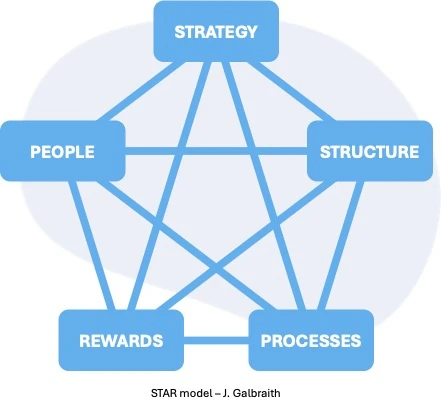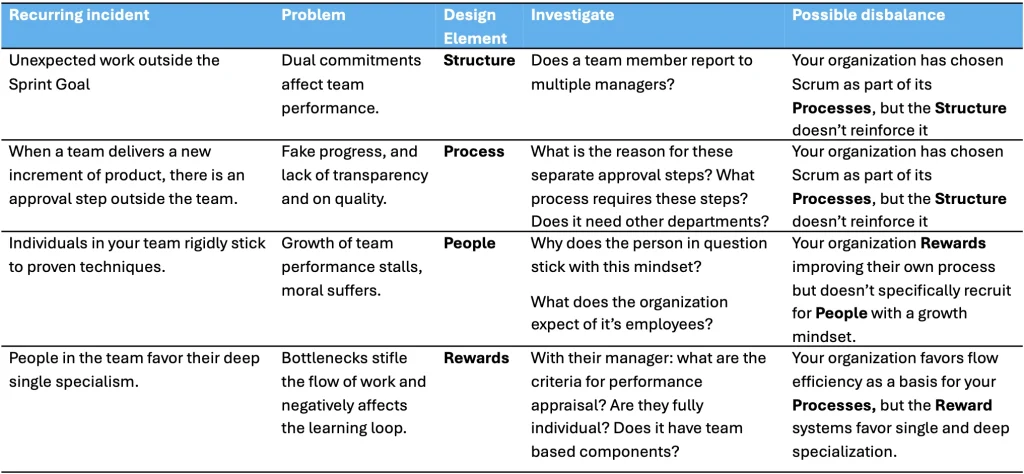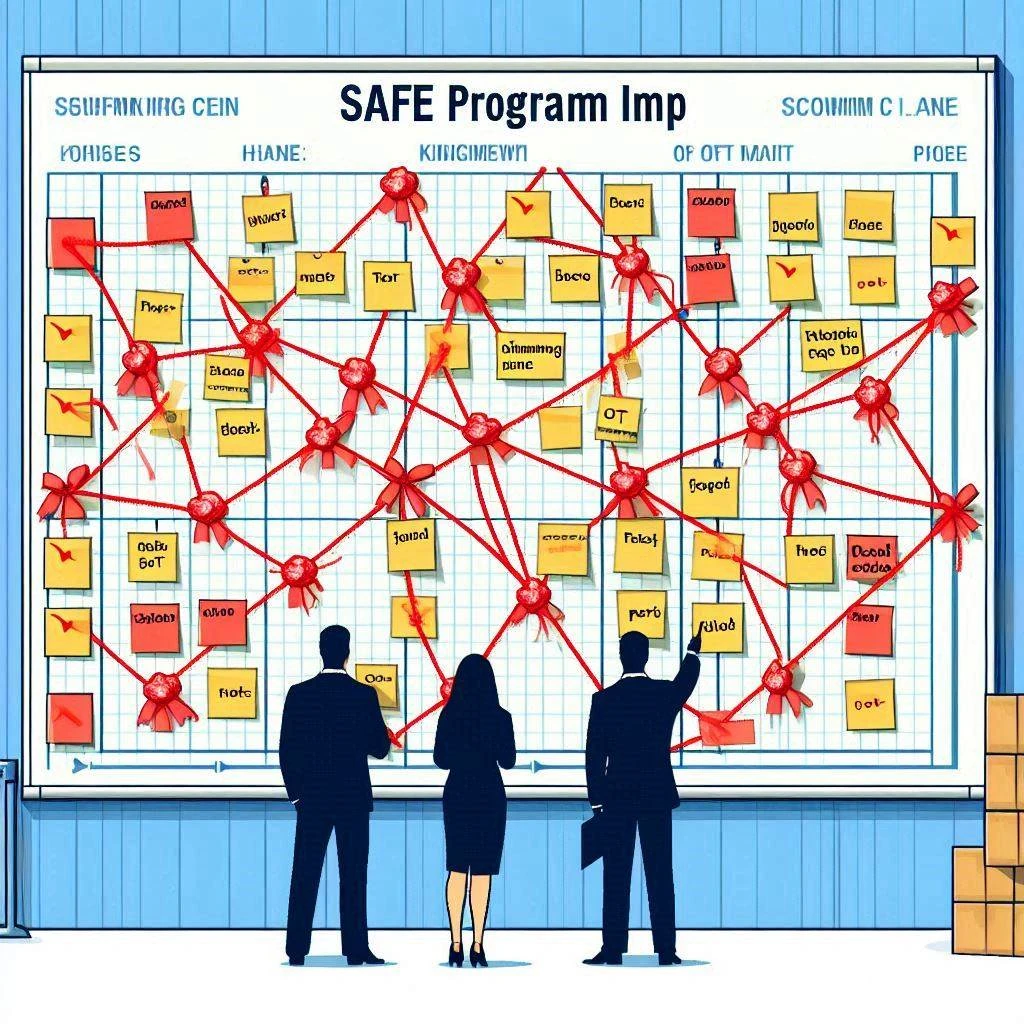Organizations often adopt Agile frameworks in hopes of improving performance. However, simply implementing a framework does not automatically lead to greater alignment or efficiency. For example, a scaled Agile framework may introduce new ways to manage dependencies between teams, but transparency alone does not drive meaningful change. Management must take action to adapt the organizational design to address these dependencies and other systemic impediments.
Agile frameworks can highlight recurring issues (i.e. bottlenecks, team misalignment, or stalled growth) but identifying problems is not the same as resolving them. Many Scrum Masters and Agile coaches grow frustrated when the same challenges persist despite repeated efforts to flag them. To make a lasting impact, organizations must examine the fundamental elements of their design.
Seeing the Organization as a System
Jay R. Galbraith, in Designing Organizations, emphasizes that organizations must be viewed holistically as complex social systems. Problems arise due to conflicting elements within the existing design. Consider a team encouraged to pursue a sprint goal, yet evaluated based on individual performance metrics. In an environment that prioritizes personal achievements over team success, coaching alone cannot overcome this misalignment. To drive real change, the organization must establish reinforcement mechanisms—such as performance appraisals that reward collective outcomes.
Aligning Organizational Design Elements
This principle is further developed in the STAR model (Galbraith, 2014), which asserts that an organization’s strategy must be supported by the interdependent elements of its design. Creating Agile Organizations (Ramos & Pavlichenko, 2022) applies this model to Agile transformations, advocating for adaptability based on strategic focus.
Even if Scrum Masters, Agile Coaches, or RTEs are not directly responsible for organizational design, understanding these principles can help them navigate challenges in helping organizations become Agile.

Applying the STAR Model to Organizational Issues
To influence change, acknowledge that transparency alone will not resolve deep-rooted systemic issues. When recurring team challenges emerge, consider investigating the organizational structure beyond the immediate team context.
Here are some examples to illustrate:

These examples illustrate how conflicting design elements can impede execution. By recognizing these misalignments, Agile leaders can engage with decision-makers to explore potential solutions. Identifying those responsible for the organization’s design and initiating conversations about adaptation can lead to meaningful change.
Reflecting on your past efforts, or current speedbumps, you might be able to identify such disbalances. In that case it takes your courage to make a real difference. After spotting a potential flaw in the fabric of your organization, your next step is to identify those responsible. Who are the people responsible for the involved of the organization design? See if you can start a conversation. Raise the issue and explore if you can resolve the problem in such a way that the design elements can better reinforce one another. Even more, you might find an opening to assess the entire organization design and see if there is more disbalance.
Agile Frameworks Alone Won’t Fix Your Organizational Issues
Ultimately, Agile frameworks provide visibility, but they do not automatically resolve organizational challenges. If teams struggle despite transparency, the cause might lie in a misaligned organizational design. Addressing these fundamental design issues is what enables organizations to thrive, not simply adopting a framework.
Jeroen Valkier
- May 1, 2025
- 2 minutes

